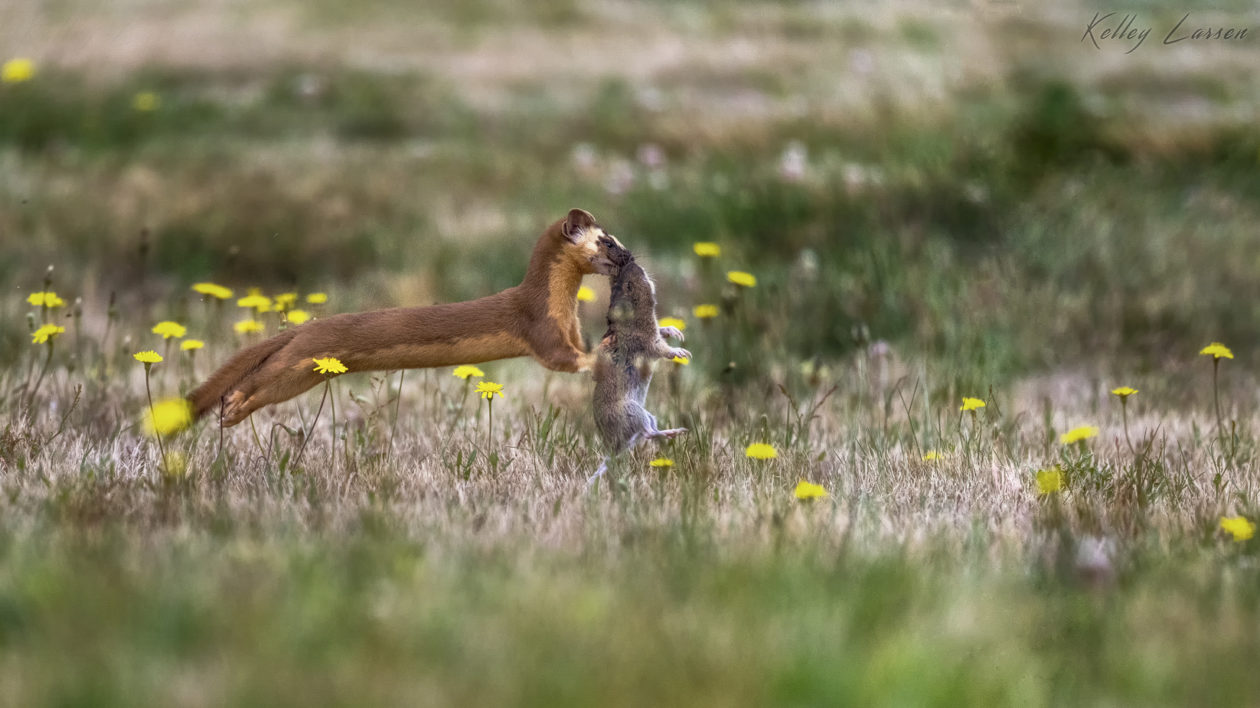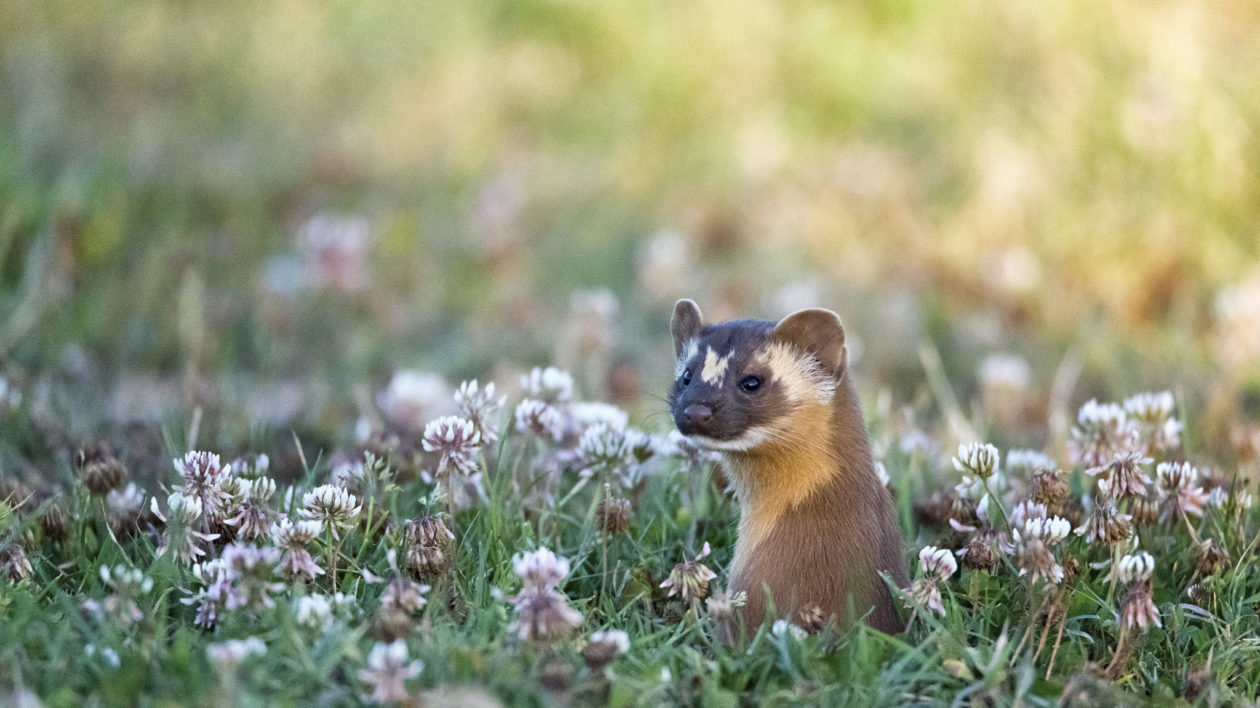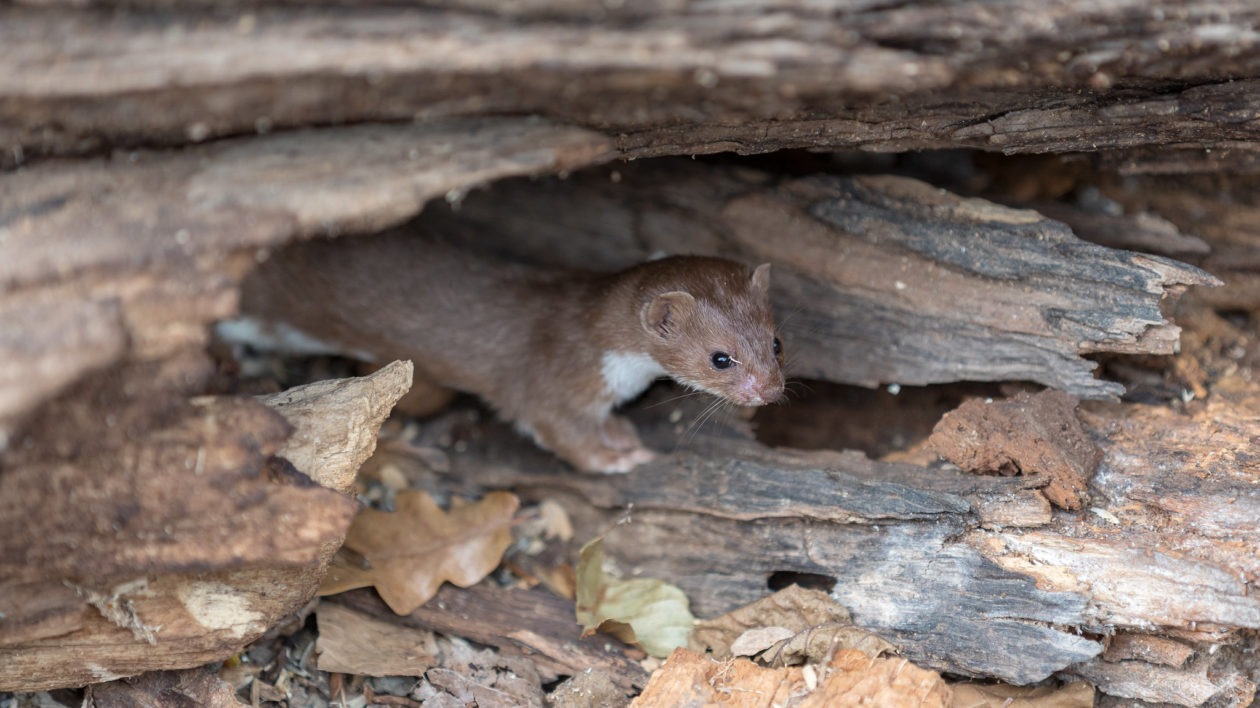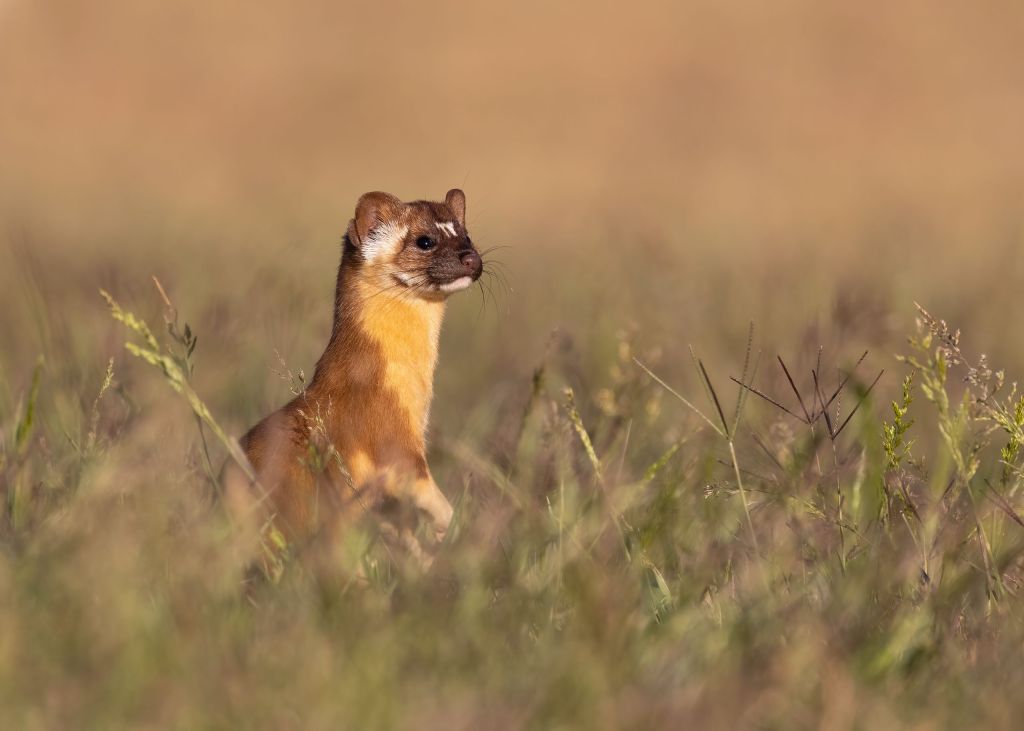North America’s weasel populations may be in serious decline. Your observations and photographs can help researchers and conservationists.
Three species of weasels – long-tailed, short-tailed and least – are secretive, small carnivores that range widely in North America. For those of us who grew up in rural areas, we often heard stories of weasels raiding chicken coops or being spotted hunting mice in grain bins. This led to the perception that weasels are common if seldom-seen mammals – a perception that holds to this day.
They are out of sight, out of mind. In many states, they are still unprotected wildlife, essentially viewed as vermin. But there are alarming signs that weasel populations may be facing challenges.
A new paper in the journal PLOS ONE finds that weasels are likely in decline and the long-tailed weasel may have disappeared from large parts of its range. The study also points to a need to better track weasels, so that wildlife managers and conservationists could understand the weasels’ disappearance.
“The authors of this paper are active field biologists, and we noticed that we just don’t see weasels in our data after field work,” says coauthor Roland Kays, research professor of forestry and environmental resources at North Carolina State and head of the N.C. Museum of Natural Sciences’ Biodiversity Lab. “We thought that this could actually be a real problem.”

Where are the Weasels?
The study looked at harvest data from fur trappers, data from museum collections and iNaturalist, and photos from the Snapshot USA, a national camera trap survey.
Fur trapping for weasels remains legal throughout much of their range, and states keep data on catches going back decades. “The most striking thing is how many weasels fur trappers used to trap,” says Kays. “That’s dropped by orders of magnitude.”
That in no small part is due to fewer people trapping and less trapper effort aimed at weasels, but the study still showed an alarming decline.
For museum data and other observations, there are areas with frequent long-tailed weasel sightings before 2000, but few or none after 2000. “The animals have potentially disappeared from large parts of their range,” says Kays.
In a press release, he noted the overall trend shown by their analysis: “It’s hard to say anything conclusive other than these data sets are all are painting the same picture.”

Kays is quick to point out that this is an initial attempt to understand weasel population trends, but more work is needed. He hopes it can help bring attention to small carnivores, often overlooked in global conservation.
Large carnivores are frequently studied and even most casual nature lovers know of the challenges facing tigers and cheetahs. But small carnivores are often poorly understood and overlooked, despite a growing body of evidence that suggests they face similar challenges. Another recent paper in the journal Biological Conservation shows a global trend of small carnivore decline.
Compare the conservation attention to polar bears and least weasels. Polar bears are the largest carnivore, and are featured in nature documentaries, mainstream news coverage and conservation publications. They’re instantly recognizable even though most of us will never see one in the wild.
The least weasel is the smallest carnivore on the planet. Most don’t even know it exists, even though it may be in your local woods.

What’s Happening?
Kays points to the need for more science before drawing any conclusions on why weasels may be declining.
Despite the fact that weasels can still be trapped, he says that overharvest is not likely to be a major factor in the decline. With weasels disappearing across southern parts of their range, climate change appears to be a significant factor.
Changing agricultural practices and the use of rodenticides could also play a role. Rodenticides leave sick or dead mice and rats around, passing on the poisons to predators like weasels. The impact of rodenticides on other predators including raptors and bobcats has been traced in studies in California and elsewhere.
Changes in forests and predator communities have also been identified as a potential cause of decline. Owls and hawks have increased in population, so they could be preying on weasels. Abundant white-tailed deer populations have eliminated the understory of eastern forests, which could make weasels easier prey.
“There’s no smoking gun,” says Kays. “It could be a combination of factors.”

You Can Help
Kays says there’s a need to better track weasels, so that researchers can understand what’s happening. That includes designing camera trap sets specifically for weasels. With their small body size and quick movements, weasels captured by conventional trail camera sets may not reveal the species. Kays says that a baited box with a camera in it has proven effective in Europe, and gets the weasel right in front of the trap.
“We need to find the right set and the right baits and lures and get dialed in specifically for weasels,” he says. “That’s a real priority.”
There’s also a role for you. Citizen science data is a tremendous help, and has already tracked likely declines and disappearances. For mammal watchers, backyard nature lovers and trail-camera enthusiasts alike, a weasel is a special sighting.
But that sighting should be more than a memory. Share your photo on iNaturalist, where researchers can access it. And if you’re a photographer, make sure to get a photo of the tail: that is a key diagnostic in distinguishing the species.
“We are really trying to put weasels on the radar,” says Kays. “If you take a photo of a weasel, we would love to see it. Small carnivores are important species in their ecosystems. There are still a lot of weasels in North America. But now is the time to get a better idea what’s happening, so that we can address the situation before it becomes critical.”




just saw an adorable weasel in the Bay Area of California this morning with a mouse catch.
You should consider the wide use of rodent killers so many people use just to get rid of mice. The mice or rats eat the poison and then go out to die but the poison is still active and will kill anything that eats them. Our neighbor had a rat problem and used just such a rodenticide which poisoned a pair of owls we had nesting for years and a family of foxes. There are non cary over poisons available – use them.
I saw a weasel in my backyard around the bird feeder. He is very fast and can’t catch him in a photo. He can climb trees very well and goes out on the lightest limb. The second morning he was back and chasing a chipmunk. To my surprise the chipmunks are gone and so is the weasel. I was very fascinated to watch for what little time I saw him. He was small, long body with a long bushy tail.
How do I submit a report and pictures of a Long Tailed Weasel, from Big Sur Ca, this morning? I captured him in front of the house around 0700.
With my personal experience of just over 45 years on my rural property in NE Ohio; they are occasionally caught in traps set for the abundant rodents on my property of past pasture, now left for hay and surrounding areas of brush and timber stands. If Weasels are caught and still alive, I do release them (trust me, they don’t appreciate being handled live and you must wear good gloves!!) to further assist me in rodent control. DJK
http://WWW.FENCE-FLAG.COM
Someone posted a picture of what looks like a long tailed weasel on Nextdoor.com in Bend, Oregon. They have a video of it and were asking if anyone knew what it was. It was at their house running around their trash can. Here’s the link take a look and tell me what you think? https://nextdoor.com/p/Z54tXKHrYWTD?utm_source=share&extras=NDc0MTgzMg%3D%3D
Hello there. I moved back home to my parents house in Penryn, Ca and I’m living in a 5th wheel on their property. I saw a weasel today and then told my dad about it and he nonchalantly confirmed that there are weasels among us that borrow along the creek.